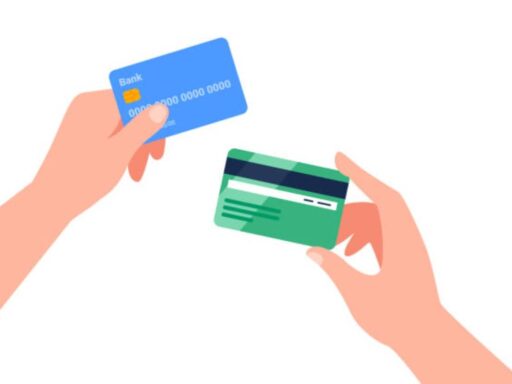Have you ever thought about adding someone as an authorized user on your credit card? Maybe it’s a family member, a partner, or even your teenager who’s just starting to learn about money. I get it—there are a lot of questions swirling around this decision. Will it help them build credit? What happens if they overspend? And how does it affect your own credit score? Trust me, I’ve been there.
In this guide, I’ll break down what it means to add an authorized user, the benefits and risks involved, and how to do it right. Let’s dive in!
What is an Authorized User?
So, what exactly does it mean to be an authorized user? Simply put, an authorized user is someone who is allowed to use your credit card account but isn’t responsible for paying the bill. You, as the primary cardholder, maintain full control over the account and its payments. This arrangement can be beneficial for both parties, but it’s essential to understand the ins and outs before making a decision.
Key Points to Understand:
- Usage: Authorized users can make purchases, but they cannot change account details or payment methods.
- Liability: As the primary cardholder, you’re responsible for the bill, while the authorized user is not.
- Credit Impact: Their spending habits can influence your credit score, both positively and negatively.
Why Add an Authorized User?
Adding an authorized user can be a strategic move for several reasons. Here’s why you might consider it:
1. Build Credit History
If you have a good credit score and a solid payment history, adding someone as an authorized user can help them build their credit. This is especially useful for:
- Young Adults: If you have a child or relative who is just starting out, this can jumpstart their credit journey.
- Newcomers: Friends or family members new to the UK may need a credit history to secure loans or mortgages.
2. Shared Rewards and Benefits
Many credit cards offer rewards programs, and adding an authorized user can help you rack up points faster. Think about:
- Cash Back: If your card offers cash back on purchases, having an authorized user can boost your earnings.
- Travel Points: For those who love to travel, pooling points can lead to free flights or hotel stays.
3. Financial Education
Adding an authorized user can be a great way to teach responsible credit use. Here’s how:
- Real-Life Experience: They can learn how to manage spending and understand the importance of paying bills on time.
- Open Conversations: It opens the door for discussions about budgeting and financial responsibility.
How to Add an Authorized User
Ready to add someone as an authorized user? Here’s a step-by-step guide to make it easy:
Step 1: Choose the Right Person
This is crucial. You want to pick someone you trust to use your credit responsibly. Consider:
- Spending Habits: Are they financially responsible? Do they have a history of overspending?
- Relationship: Is this someone you have a strong relationship with? Trust is key.
Step 2: Contact Your Credit Card Issuer
You can usually add an authorized user through your online account or by calling customer service. Here’s what to keep in mind:
- Online Process: Log into your account and look for the option to add an authorized user.
- Phone Call: If you prefer speaking to someone, call the customer service number on the back of your card.
Step 3: Provide Necessary Information
You’ll need to provide some basic information about the authorized user, such as:
- Full Name: Make sure it matches their identification.
- Date of Birth: This is usually required for verification.
- Social Security Number: Some issuers may ask for this, especially if the authorized user is a minor.
Step 4: Set Boundaries
Before handing over the card, have a conversation about spending limits and expectations. Consider:
- Monthly Limits: Discuss how much they can spend each month.
- Payment Expectations: Make it clear that while they aren’t responsible for the bill, you expect them to communicate about their spending.
Responsibilities of an Authorized User
Being an authorized user comes with its own set of responsibilities. Here’s what they need to know:
1. Spending Power
As an authorized user, they can make purchases, but they should:
- Stay Within Limits: Stick to the agreed-upon spending limits to avoid straining your relationship.
- Communicate: Keep you in the loop about their purchases, especially if they’re large or unexpected.
2. No Payment Responsibility
While they can use the card, they aren’t responsible for paying the bill. However:
- Impact on Credit: Their spending habits will affect your credit score, so it’s essential they understand this.
Things to Consider Before Adding an Authorized User
Before you hit that “add” button, here are some important considerations:
1. Impact on Your Credit Score
- Credit Utilization: If the authorized user spends heavily, it could increase your credit utilization ratio, which might hurt your score.
- Payment History: If they don’t communicate well and you miss a payment, it could negatively impact your credit.
2. Easy Removal
Life changes, and sometimes you need to remove an authorized user. The good news is:
- Quick Process: You can remove them with just a call to your issuer or through your online account.
- No Hard Feelings: Just communicate openly about the decision to avoid misunderstandings.
Conclusion
Adding an authorized user on your credit card can be a smart move if you approach it thoughtfully. It’s about building trust, sharing benefits, and fostering financial education. Just remember to weigh the pros and cons, set clear expectations, and keep the lines of communication open. With the right approach, both you and the authorized user can reap the rewards of this arrangement. So, if you’re considering it, take the plunge! It might just be the best financial decision you make together




